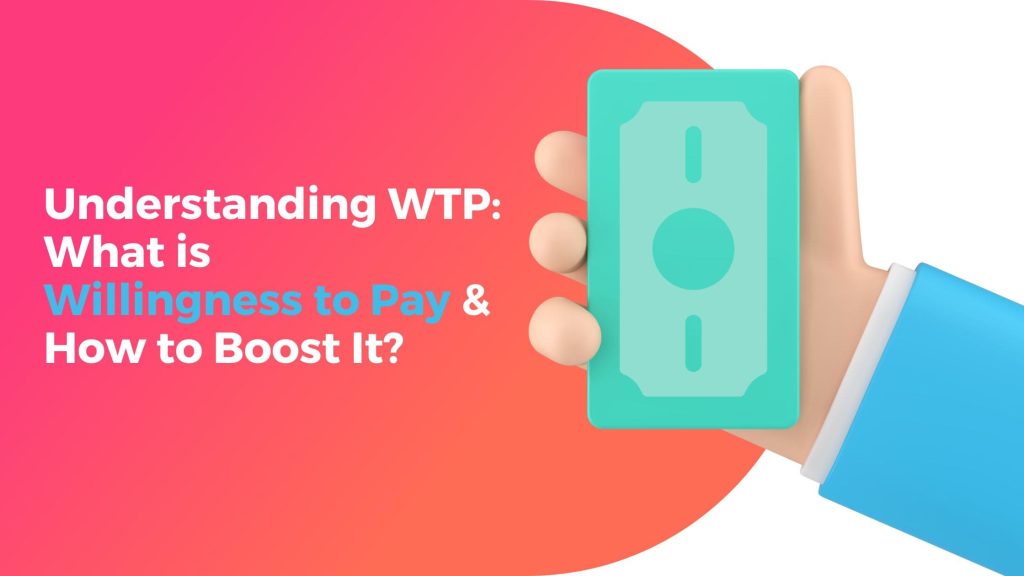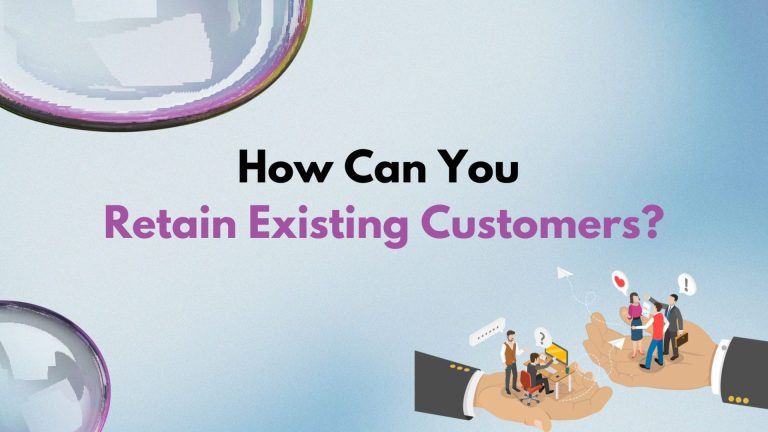Understanding WTP: What is Willingness to Pay & How to Boost It?
Your customer’s willingness to pay (WTP) is the most money they’re okay spending on what you’re selling. It shows how much they think your stuff is worth. Knowing WTP is super important for businesses because it helps figure out how to set prices that make the most money and keep customers happy. In this blog, we’ll talk all about WTP and share easy tips to make it higher. Whether you own a business or just want to learn more about pricing, you’re in the right place!
What is willingness to pay (WTP)?
You might be wondering, What is WTP? It’s basically the most money someone is okay with spending on something they want to buy. Lets start with a basic example. Imagine you really want a new toy. You might be willing to pay $10 for it, but if it costs more than that, you might not buy it. That $10 is your WTP for the toy.
WTP is important for businesses because it helps them figure out how much to charge for their products or services. They want to set prices that make customers happy and still make enough money.
Understanding WTP means knowing what customers think your stuff is worth. If they think it’s worth a lot, they might be willing to pay more. But if they don’t see much value in it, they won’t want to pay as much. WTP can change based on many things like where you live, who you are, and even how much time has passed. Instead of one fixed price, it’s often shown as a range of prices.
When you study WTP, you can make your prices and packages better, which might help you sell more stuff in different places.
So, businesses use WTP to decide on prices that customers will be willing to pay. They might do surveys or look at what similar products are selling for to figure out the right price. By knowing WTP, businesses can make smart pricing decisions that keep customers coming back for more.
3 reasons why willingness to pay is important
Here’s why understanding willingness to pay is crucial for businesses to succeed with these three key reasons:-
- Willingness to Pay Economics Reflects Market Demand
Willingness to pay (WTP) is like a sign that shows how much people want something. If lots of people are okay paying a high price, it means they really want it. But if they only want to pay a little, it might mean they don’t want it as much. WTP helps businesses understand if there’s a lot of interest in what they’re selling. By knowing what customers are willing to pay, businesses can make sure they’re offering the right stuff that people actually want to buy. - Willingness to Pay Drives Pricing Strategy
Deciding how much to charge for something is a big deal for businesses. WTP helps them figure out the best price that makes the most money and still gets people to buy. By studying WTP, businesses can decide on prices that work well with what customers like, what other companies are charging, and what’s happening in the market. This smart response to pricing questions based on WTP helps businesses make more money and stay ahead of the competition. - Willingness to Pay Drives Product Development
Knowing what customers are willing to pay for helps businesses make better products. They use WTP to see which features or things people value the most. By focusing on what customers want to pay for, businesses can make products that match what customers really want. This way, they can make products that are more likely to be successful and make customers happier.
In short, willingness to pay is important because it shows how much people want something, helps decide on prices that make the most money, and guides making products that customers love. Understanding WTP helps businesses do better and make more money in the end.
How to calculate WTP?
Calculating WTP isn’t easy because people don’t always make decisions based on reason. If you ask 100 people what they’d pay for something, you might get 100 different answers. But even though there’s no magic formula for WTP, you can still figure it out. Here are three ways to do it:
- Market research:
Look at what other companies are charging for similar things. If there’s a lot of competition, you might have to keep your prices low. But if you’re the only one selling something, you can probably charge more. - Customer research:
Make sure your product matches what customers want. If your product has features that people really like, they’ll be willing to pay more for it. - Surveys:
Ask customers directly what they think. Surveys can help you find out what customers want, how much they’re willing to pay, and other important information that can help you set prices.
How to increase the willingness to pay pricing strategy?
Willingness to pay can change, depending on your product and where it fits in the market. There are different ways you can make your customers more willing to pay for your product, but it requires some work. Here are three ways to increase willingness to pay pricing strategy:
- Perfect your value proposition
Make sure your customers know why your product or service is special. Tell them what makes it better than others and how it can solve their problems. If they see the value in what you’re offering, they’ll be more willing to pay a higher price for it. - Raise brand awareness
Let more people know about your brand and what you stand for. This can make your brand more valuable in their eyes, which might make them willing to pay more for your products or services. Use social media, advertising, and other marketing tactics to spread the word about your brand. - Get involved with influencer marketing
Partner with influencers who have a big following and can promote your brand to their audience. When people see influencers they trust using your products or talking about your services, they’ll be more likely to see the value in them and be willing to pay a higher price.
By focusing on these strategies, you can increase the perceived value of your offerings and boost customers’ willingness to pay higher prices for them.
Willingness to pay Formula examples
Here are some willingness to pay formula examples that show how your clients decide how much to pay for things:
- Software Subscriptions: As a buyer, you might pay $50 every month for a software that helps your team work better. But for a software with fewer features, you might only pay $20 each month.
- Advertising Services: A business owner might pay $1000 for a fancy ad campaign that brings in lots of customers. But for a similar campaign that doesn’t work as well, they might only pay $500.
- Movie Tickets: Some people might be willing to pay $10 for a movie ticket, while others might only want to spend $5. The price of the ticket depends on factors like the popularity of the movie, the theater’s location, and the viewer’s personal preferences.
- Smartphones: A high-end smartphone with all the latest features might have a willingness to pay of $1000 for some customers, while others might only be willing to pay $500 for a more basic model. The price difference reflects the perceived value of the features included in each phone.
- Restaurant Meals: The willingness to pay for a meal at a fancy restaurant could be $50 for one person, while the same meal at a more casual eatery might only be worth $20 to another person. Factors like the quality of the food, the ambiance of the restaurant, and the customer’s budget all influence their willingness to pay.
- Gym Memberships: Some people might be willing to pay $50 per month for access to a gym with state-of-the-art equipment and amenities, while others might only want to spend $20 for a more basic gym membership. The price reflects the perceived value of the facilities and services offered by each gym.
Overall, willingness to pay varies depending on individual preferences, perceived value, and the specific circumstances of each transaction.
These examples show how buyers are willing to pay for things based on how useful they think they’ll be. Understanding what customers are willing to pay helps business owners set the right prices and make more money.
Willingness to pay FAQs
Here are some FAQs on willingness to pay model:
- What does willingness to pay mean?
Willingness to pay (WTP) is like a special sign that shows how much someone is okay paying for something they want to buy. It’s like saying, “I like this thing, and I’m willing to spend this much money on it.” It helps businesses know how much people think their stuff is worth. - Is willingness to pay the same as market demand?
No, they’re not exactly the same, but they’re kind of related. Willingness to pay is about how much someone wants to spend on something. Market demand is about how much of something people want to buy at different prices. So, while willingness to pay shows individual interest, market demand shows overall interest from lots of people. - What is the difference between willingness to pay (WTP) and willingness to accept (WTA)?
Willingness to pay (WTP) is about how much someone is willing to spend to get something they want. It’s like saying, “I’m okay paying this much money for this thing.” On the other hand, willingness to accept (WTA) is about how much someone is willing to get paid to give up something they have. It’s like saying, “I’ll give up this thing if you pay me this much money.” So, WTP is about buying, while WTA is about selling.
Wrapping It Up
Understanding willingness to pay (WTP) is essential for businesses aiming to maximize profits and satisfy customer demand. WTP reflects the value that customers perceive in a product or service, and by comprehending it, businesses can tailor their pricing strategies to align with customer expectations. By perfecting their value proposition, raising brand awareness, and leveraging influencer marketing, businesses can effectively boost WTP and enhance their competitiveness in the market. Overall, a deep understanding of WTP enables businesses to make informed decisions.
Explore essential business strategies and topics with Expandus business coaching services. Book a session today for personalized guidance and support tailored to your needs.













